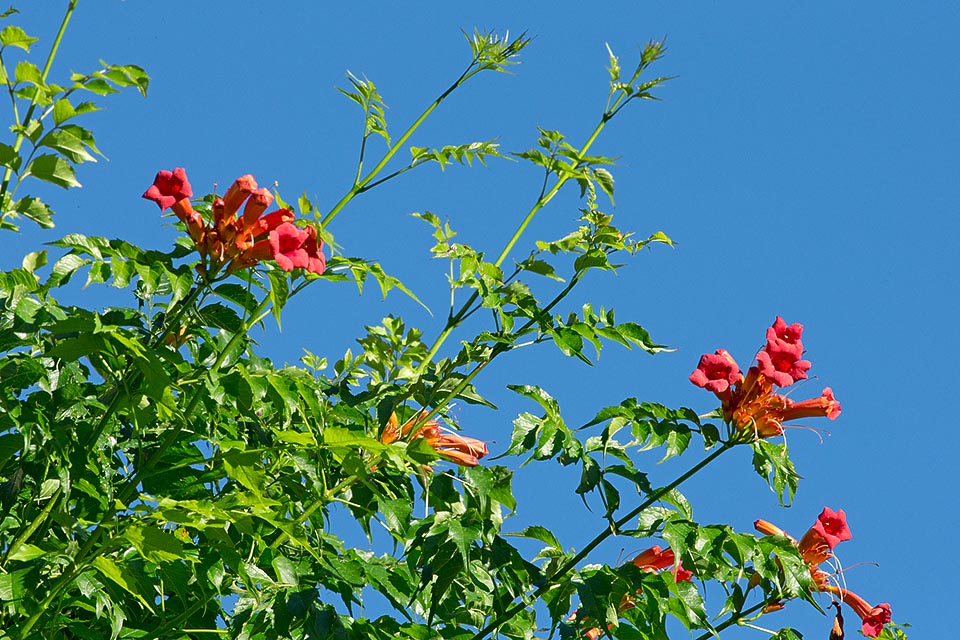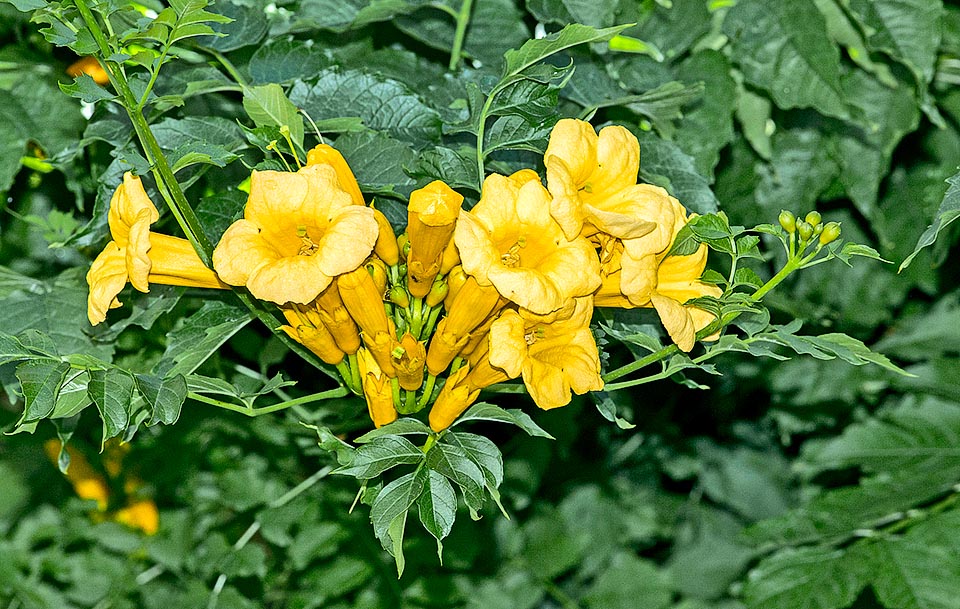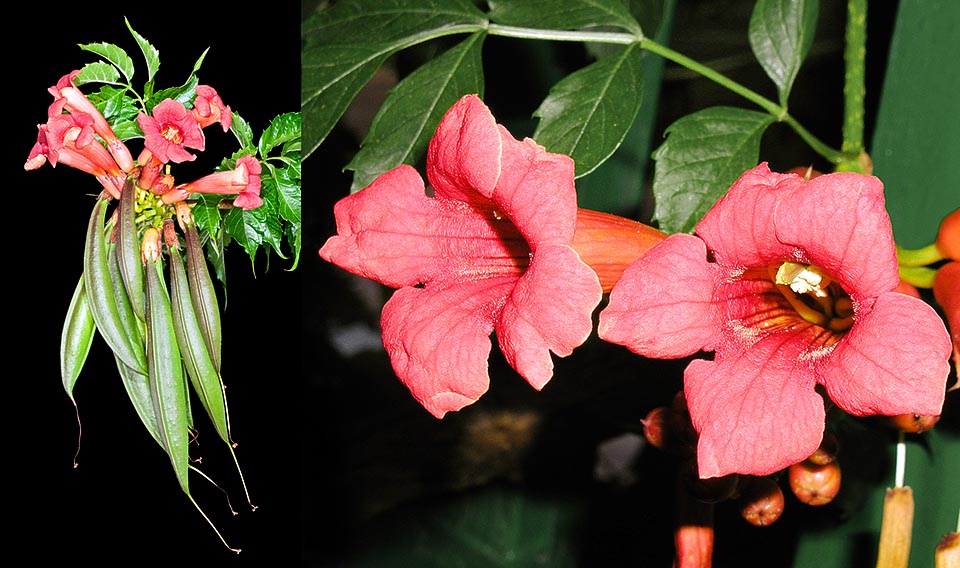Family : Bignoniaceae

Text © Pietro Puccio

English translation by Mario Beltramini

Woody climber with deciduous leaves, vigourous, fast growing, Campsis radicans is native to central and eastern USA © Giuseppe Mazza
The name of the genus comes from the Greek “kampé” = bent, with reference to the bent stamens; the Latin name of the species “radicans” = rooting, refers to the adventitious roots with which it anchors to the supports.
Common names: “bignonia” (Italian); “trumpet creeper”, “trumpet vine”, “cow-itch vine”, “devil’s shoelaces”, “shoestrings”, “hell vine” (English); “jasmine de Virginie”, “trompette de Virginie”, “jasmine trompette”, “bignone” (French); “Trompetenwinde”, “Trompetenblume”, “Jasmintrompete”, “Klettertrompete”, “Rote Trompete” (German); “enredadera de trompeta”, “jazmin de Virginia”, “bignonia roja”, “trompeta trepadora”, “trompetilla”, “trompa de fuego” (Spanish); “trompete vinha” (Portuguese).

The inflorescences bear 8-12 imbutiform flowers, 3-4 cm broad. The corolla, usually red, can be also yellow © Giuseppe Mazza
The terminal inflorescences carry 8-12 funnel-shaped flowers of a red or orange-red colour, of 6-8 cm of length and 3-4 cm of diameter; the fruits are woody capsules long up to 20 cm, containing many 2 cm long, flat and winged seeds. It reproduces by seed, semi-woody cutting in summer, radical cutting in winter, air and ground layering.
Plant of remarkable ornamental value, can be cultivated also in cold-temperate zones, as it can resist, during the vegetative rest, to temperatures up to -20°C.

The fruits are woody capsules up to 20 cm long, containing many flat seeds. It loves the sun but resists to winter up to -20 °C © Giuseppe Mazza
Synonyms: Bignonia radicans L. (1753); Gelseminum radicans Kuntze (1891); Tecoma radicans de Candolle (1845); Bignonia radicans var. praecox Jaeger (1865); Campsis radicans f. flava (Bosse) Rehder (1926); Campsis radicans f. minor (de Candolle) Voss (1895); Campsis radicans f. praecox (Jaeger) Rehder (1940); Campsis radicans subf. praecox (Jaeger) Voss (1895); Campsis radicans var. atropurpurea (G. Kirchner) Voss (1895); Campsis radicans var. praecox (Jaeger) C. K. Schneider (1911); Campsis radicans var. speciosa (M. Parsons) Voss ex C. K. Schneider (1911); Tecoma radicans var. atropurpurea G. Kirchner (1864); Tecoma radicans var. flava Bosse (1842); Tecoma radicans var. lutea G. Kirchner (1864); Tecoma radicans var. minor de Candolle (1845); Tecoma radicans var. praecox (Jaeger) Jaeger (1884); Tecoma radicans var. speciosa (M. Parsons) Rehder (1902); Tecoma speciosa M. Parsons (1887).
